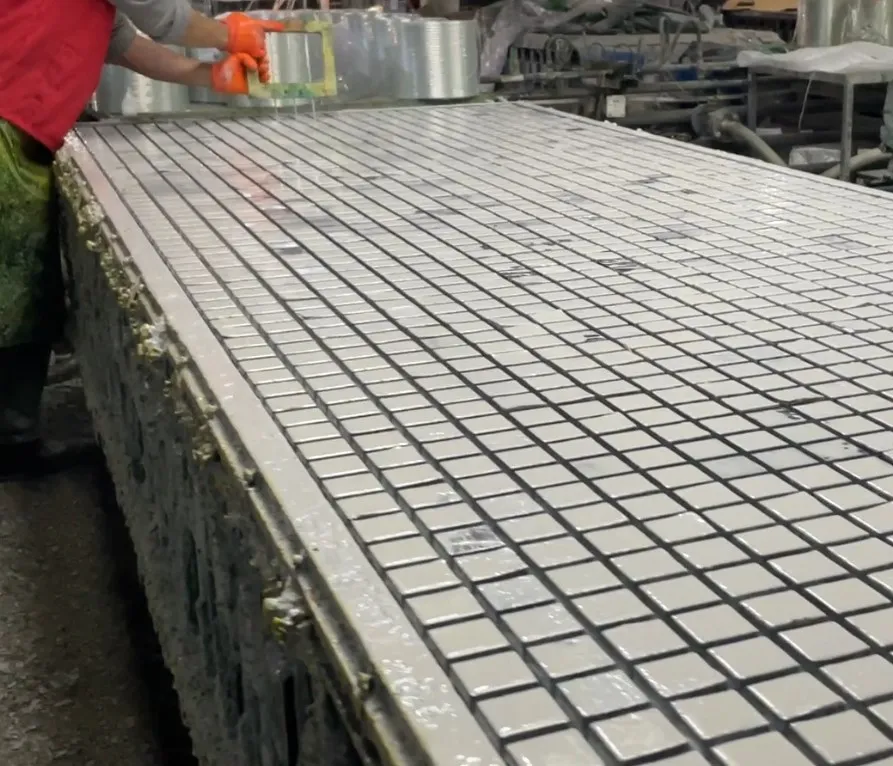loading...
- No. 9, Xingyuan South Street, Dongwaihuan Road, Zaoqiang County, Hengshui, Hebei, China
- admin@zjcomposites.com
- +86 15097380338
- Welcome to visit our website!
grp gratings
Understanding GRP Gratings A Comprehensive Overview
Glass Reinforced Plastic (GRP) gratings, often referred to as fiberglass gratings, are innovative composite materials that have gained significant popularity across various industries. Their unique characteristics and versatility make them highly desirable for diverse applications, particularly in environments that demand durability, resistance to corrosion, and lightweight solutions. This article delves into the fundamental aspects of GRP gratings, their advantages, applications, and the future outlook in various sectors.
What are GRP Gratings?
GRP gratings are manufactured by combining fiberglass reinforcement with a resin matrix, resulting in a lightweight, strong, and corrosion-resistant product. The manufacturing process typically involves molding thermosetting or thermoplastic resins with glass fibers, which provides the necessary strength and durability. The gratings come in various forms, including molded and pultruded styles, each suited to different needs and applications.
Advantages of GRP Gratings
1. Corrosion Resistance One of the standout features of GRP gratings is their excellent resistance to a wide range of chemicals and corrosive environments. Unlike traditional materials such as steel or aluminum, GRP does not rust or corrode, making it ideal for use in harsh environments, such as chemical plants and marine applications.
2. Lightweight GRP gratings are lightweight compared to steel or concrete alternatives. This attribute significantly reduces transportation costs and facilitates easier handling and installation, which can lead to decreased labor expenses.
3. Strength and Durability Despite their lightweight nature, GRP gratings possess impressive load-bearing capabilities and can withstand substantial weight without deforming or breaking. This durability ensures that they can be used in demanding applications, including walkways, platforms, and industrial flooring.
4. Non-Conductive GRP materials are non-conductive, making them safe to use in electrical applications where the risk of electric shock or static build-up could be a concern. This quality also enhances safety in environments where hazardous materials are present.
5. Design Flexibility GRP gratings can be produced in various colors, sizes, and mesh patterns, providing designers and engineers with options that meet their specific aesthetic and functional requirements. This versatility allows for customized solutions tailored to unique project needs.
grp gratings

Applications of GRP Gratings
The applications of GRP gratings are vast and varied, spanning numerous industries
- Chemical and Petrochemical Industries GRP gratings are widely used in chemical processing plants due to their resistance to corrosive substances. They offer safe and durable solutions for walkways, trenches, and support platforms.
- Food and Beverage Sector In the food and beverage industry, hygiene is paramount. GRP gratings are easy to clean and resistant to microbial growth, making them suitable for use in food processing plants and other environments where cleanliness is crucial.
- Marine Applications The marine environment presents unique challenges due to exposure to saltwater and harsh weather conditions. GRP gratings are resistant to these elements, making them ideal for use on docks, ship decks, and other marine structures.
- Wastewater Treatment Facilities In wastewater treatment, GRP gratings can withstand the harsh chemicals and conditions present, making them a reliable choice for access platforms and walkways within treatment plants.
- Construction and Infrastructure GRP gratings are increasingly being utilized in the construction sector for platforms, staircases, and industrial flooring due to their strength and design flexibility.
Future Outlook
As industries increasingly prioritize sustainability and efficiency, the use of GRP gratings is likely to continue growing. Their lightweight nature and durability reduce the need for frequent replacements, aligning with environmental goals through reduced material waste. Moreover, advancements in composite manufacturing technologies may lead to even stronger and more versatile products, further expanding their potential applications.
In conclusion, GRP gratings are a remarkable solution that combines strength, safety, and aesthetic appeal. With their vast array of applications across multiple sectors, their continued adoption signals a shift toward more innovative, durable, and sustainable materials in industrial design and construction. As we move forward, GRP gratings are poised to play an increasingly important role in meeting the challenges of modern infrastructure while promoting safety and efficiency.
-
GRP Structures: The Future of Lightweight, High-Performance EngineeringNewsJun.20,2025
-
FRP Water Tank: High-Performance Storage for Corrosive and Clean Water SystemsNewsJun.20,2025
-
FRP Square Tube: The New Industry Standard for Chemical and Structural ApplicationsNewsJun.20,2025
-
FRP Pultruded Profiles: The Ultimate Choice for Lightweight Structural StrengthNewsJun.20,2025
-
FRP Handrails: The Safer, Smarter, and Stronger Choice for Modern InfrastructureNewsJun.20,2025
-
FRP Grating: The Smart Solution for Durable, Lightweight Industrial FlooringNewsJun.20,2025
-
Why Choose a Galvanized Water Tank for Your Storage NeedsNewsMay.21,2025
